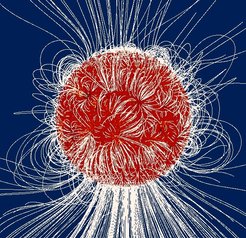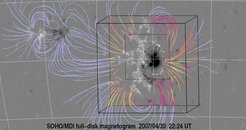Combined loop stereoscopy and field extrapolations in active regions

A project in data analysis In this project we want to apply a newly developed extension of the force-free field extrapolation code to observations. In this new extension, the extrapolation of surface magnetograms are supplemented with the 3D shape of individual loops to improve the field model. The loop shapes can be extracted from solar EUV images by means of stereoscopy reconstruction. The surface magnetograms are available from ground based (SOLIS) and space-born (SDO) vector magnetographs. The aim of the project is to derive the magnetic field of an active region which is consistent with both data sets.














